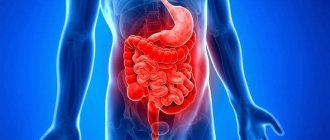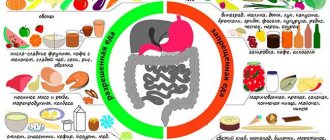Etiology and pathogenesis
Hydrochloric acid is necessary for normal digestion. If the secretory function of the organ is impaired, its level increases, causing hyperacid conditions, or decreases, and hypoacid gastritis can develop. Its aggressive influence damages and inflames the mucous membrane. The main etiological factors provoking this pathology:
- irregular nutrition;
- alcohol abuse;
- stress;
- long-term medication use;
- chemical burn of the mucous membrane;
- infection with the bacterium Helicobacter pylori;
- endocrine diseases;
- pathologies of the liver and pancreas;
- chronic infections.
Return to contents
Symptoms of the disease
Hyperacid gastritis develops gradually. Discomfort in the stomach, pain and heaviness, heartburn, few people are alarmed. As the disease progresses, the symptoms become more pronounced and intense; you cannot cope with them on your own, and then you should consult a doctor. Among the alarm bells are the following:
Chronic hyperacid gastritis proceeds more calmly, symptoms occur less frequently, and the intensity of manifestations is less. But this does not indicate a lesser pathological process.
Signs of hypo- and anacid gastritis
For a long time, inflammation of the stomach with reduced/zero acidity does not manifest itself. The patient may experience digestive problems months after the onset of the disease. Symptoms of anacid and hypoacid gastritis include:
- unpleasant (usually putrid) odor from the mouth that does not go away even after brushing your teeth;
- gray plaque, teeth marks on the tongue;
- belching with an unpleasant aftertaste;
- decreased appetite;
- rapid satiety, feeling of fullness in the stomach after eating;
- vomiting with pieces of undigested food, mucus or bile;
- constant aching pain in the upper third of the abdomen, heaviness in the stomach;
- progressive weight loss with the same nutritional pattern;
- bowel disorder: diarrhea followed by constipation;
- flatulence, rumbling in the stomach;
- fatigue, deterioration in performance;
- frequent headaches.
If left untreated, the disease progresses, and the patient develops the following complications:
- chronic gastrointestinal pathologies – pancreatitis, cholecystitis;
- aversion to certain foods (usually meat, other protein foods);
- chronic iron deficiency, B12 deficiency anemia;
- cachexia is an extreme degree of exhaustion.
In some cases, scientists associate the development of malignant tumors with atrophic processes in the gastric mucosa.
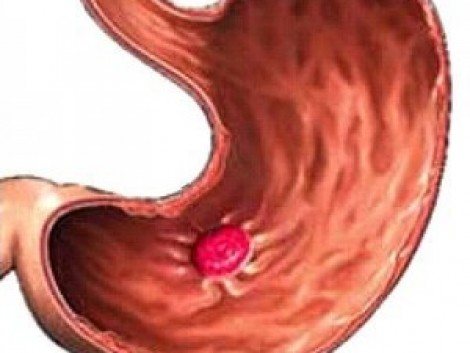
Diagnostic methods
The hyperacid form of gastritis requires a comprehensive diagnosis, including anamnesis, examination, laboratory and instrumental examinations, including:
- General and biochemical blood test. An increased level of ESR, leukocytes and other elements, a change in the ionic composition, will indicate an inflammatory process.
- Checking stool for occult blood. It will provide an opportunity to find out about the presence of bleeding erosions.
- Tests for Helicobacter pylori. They are carried out to establish the bacterial nature of the disease.
- FGDS. Makes it possible to examine the gastric mucosa and assess the extent of its damage.
- Intragastric pH-metry. Allows you to set the acidity level of gastric juice.
- Histological examination of the mucosa.
Return to contents
Hyperacid gastritis - treatment with folk remedies
The use of traditional methods of therapy for the development of gastric ulcers is no less important than the use of medications. Patients with hyperacid gastritis are recommended to resort to the following procedures:
- take healing decoctions prepared from field chamomile, sage, oak bark, yarrow, calamus root;
- try to drink less liquid during meals;
- eat about 10 almonds throughout the day;
- drink raw egg white 20 minutes before meals;
- Before meals, drink a glass of warm water with a tablespoon of honey dissolved in it.
These folk remedies help reduce the acidity of gastric juices. However, their use requires a sense of proportion.
How is hyperacidity treated?
The main treatment is aimed at relieving the acute period, eliminating the provoking factor, normalizing the secretory function of the stomach and the level of hydrochloric acid. Complex therapy is carried out using several groups of medications, physiotherapy, as well as using homeopathy and traditional medicine recipes.
Drug treatment of the disease
- Bismuth-containing medications. When taken, a thin protective film is formed on the gastric mucosa. It protects it from the aggressive effects of acid. In addition, they destroy the enzyme system of the bacterium, exhibiting a bactericidal effect and deactivate pepsin and pepsinogen, exhibiting an antacid effect. The course of treatment with the drugs “De-nol”, “Vis-nol”, “Gastro-norm” is at least 8 weeks.
- Proton pump inhibitors. A single dose suppresses the secretion of hydrochloric acid for 24 hours. This is important during concurrent antibiotic therapy, since many of them are destroyed in the acidic environment of the stomach. Omez and Rabeprazole are often used.
- Antisecretory drugs. Famotidine, Methionine or Ranitidine reduce the secretion of gastric juice by blocking histamine receptors.
- Antacids. They neutralize excess hydrochloric acid, form a protective film, and exhibit analgesic and anti-inflammatory effects. “Almagel”, “Maalox” or “Phosphalugel” are not absorbed into the bloodstream and exhibit only a local effect.
- Sedatives. Since one of the main provoking factors is stress, in the complex treatment of hyperacid gastritis it is advisable to prescribe drugs from this group (Novo-Passit, Sedafiton).
- Regenerating. Drugs from this group, for example, Methyluracil, will help restore the structure of the mucosa.
Return to contents
Antibacterial drugs as the main treatment
Treatment of hyperacid gastritis caused by Helicobacter pylori begins with the prescription of antibiotics. To do this, use: Amoxicillin, Clarithromycin, Metronidazole or Tetracycline. Their optimal combined composition is the drug “Pilobact Neo”. The simultaneous use of two antibiotics leads to their mutual reinforcement and allows you to get rid of the bacteria in 7-10 days.
Diet in the treatment of gastritis
Drug treatment will not bring a positive result if you do not adhere to the rules in nutrition. You will have to exclude fried, smoked, salty and fatty foods from your diet, as well as spices, sauces, mayonnaise, tea and chocolate. Vegetable soups, boiled, stewed or steamed lean meats and fish, low-fat dairy products, cereals, and juices from non-acidic berries will be useful for a speedy recovery. The frequency of meals should be 5-6 times a day, in small portions.
How to treat a disease with folk remedies?
Healers use herbal infusions in their recipes that can relieve the symptoms of hyperacid gastritis and improve the functioning of the gastrointestinal tract and the body as a whole. Teas, decoctions, and tinctures are prepared from them. Most often they contain: chamomile, dill, yarrow, mint, nettle, valerian, calamus, flax seeds, licorice.
Treatment with folk remedies should also be carried out under the supervision of a doctor.
Homeopathy for gastritis
Gastroenterologists practice prescribing homeopathic remedies as an auxiliary therapy. It is safe and effective with long-term use. Regular use in small doses helps normalize gastric functions. Among the drugs in this group for the treatment of hyperacid gastritis, the following are suitable: “Nux Vomica-Gomacord”, “Gastrikumel”, “Spaskuprel”.
Standards of therapy
Treatment of inflammatory pathology of the upper digestive tract with signs of atrophy is distinguished by a special approach to the problem. Hypoacid gastritis is often accompanied by irreversible morphological changes. Therefore, in many cases, assistance to a patient with such diseases is necessary for a long time, and sometimes for life. Gastroenterologists work in the following areas:
- Develop an individual diet.
- Drug therapy is carried out using traditional and alternative methods.
- Spa treatment is recommended.
Drug treatment
Inflammation of the stomach, which is accompanied by reduced secretory function, requires a differentiated approach to drug therapy. Treatment of hypoacid gastritis with drugs is carried out only after a thorough examination, identification of etiological factors, and pH measurements. When Helicobacter pylori is detected, the pathogen is eradicated according to a scheme taking into account the acidity level.
The autoimmune nature of the lesion is an indication for the use of corticosteroids. However, such drugs are included only in the presence of pernicious anemia. Because adverse reactions may develop that will prevail over the positive clinical result, especially in women of reproductive age.
To treat hypoacid gastritis, drugs of different pharmacological groups are used (Table 1).
Table 1. Medicines for the treatment of gastritis with low acidity
| Group | Titles |
| Antibiotics and antimicrobials | Amoxicillin, Clarithromycin, Metronidazole, Tetracycline, Rifabutin |
| Proton pump inhibitors (only at pH less than 6) | Omez, Lansoprazole, Esomeprazole, Nolpaza |
| Substances that replace gastric juice | Natural gastric juice, Acidin-pepsin, |
| Enzymes | Abomin |
| Hydrochloric acid stimulants | Limontar |
| Gastroprotectors | Solcoseryl |
| Enveloping and astringent | Bismuth subcitrate, Almagel |
| Motor function stimulants | Domrid, Motorix |
Attention! The choice of drug depends on the degree of atrophy of the mucous membrane, the level of acidity, and the presence of an infectious agent. Therefore, self-treatment may lead to undesirable results.
Diet
Diet plays an important role in therapy. Nutrition for hypoacid gastritis has its own characteristics. Dishes must be mechanically, thermally and chemically gentle. Therefore, they are steamed, stewed or boiled. Avoid fried and spicy foods.

It is necessary to include foods that increase the acidity of gastric juice and stimulate the motility of the digestive tract. Therefore, during the period of exacerbation, tables No. 1a and No. 1 are prescribed with a gradual transition to table No. 2. The optimal chemical irritants during the recovery period are rosehip decoction, vegetable and fruit juices diluted with water.
Sauerkraut for gastritis with low acidity
Folk remedies for the treatment of hypoacid gastritis
It is not always possible to cure the disease even with traditional methods. However, you can help relieve the condition at home. Natural remedies for hypoacid gastritis relieve unpleasant symptoms and improve the digestion process. Already proven recipes allow you to treat pathology at home.
Table 3. Folk remedies recommended for hypoacid gastritis
| Herbs and products | How to prepare and take |
| White cabbage juice | The leaves are passed through a meat grinder and the liquid is squeezed out. Drink warm, gradually increasing the dose from 100 to 200 ml 3 times a day. |
| Plantain infusion | Dry leaves are crushed, one tablespoon of raw material is poured with boiling water. Infuse the mixture and filter. The daily dose is divided into 3 doses and taken before meals. |
| Yarrow herb decoction | Add 20 g of dry raw materials to 500 ml of water. Boil for 15 minutes, leave for up to 45 minutes and filter. Drink 15 ml 3 times a day 20 minutes before meals. |
| A mixture of plantain, blueberries and St. John's wort | Take products in equal proportions. Pour 3 tablespoons of hot water and boil for 10 minutes. Take a tablespoon 3 times a day before meals 15-20 minutes. |
Important! To obtain a positive result, medications should be taken from 6 months to 3 years.
Homeopathic medicines
Some doctors prescribe homeopathy for low acidity. Treatment with drugs is long-term, and almost no side effects are observed. However, this method in civilized countries does not have a sufficient evidence base compared to traditional schemes. Hypoacid gastritis in many cases could not be cured. Therefore, at present, the use of homeopathic remedies is a questionable treatment option.
Spa treatment
During the period of convalescence (recovery), it is recommended to conduct an anti-relapse course of therapy in a sanatorium. In addition to physiotherapeutic procedures and climatotherapy, the main source for improving the condition is mineral water. Its medicinal properties are determined by its composition and pH level. Patients with hypoacid gastritis are welcome to the resorts of Morshyn, Essentuki, Truskavets, Evpatoria, Zheleznovodsk, where you can drink water directly from the pump room.
However, to achieve a positive effect, you should take this product in dosage. Therefore, before starting treatment, the doctor at the institution determines the amount and duration of water intake. For gastritis with low acidity, drink it heated to 40-45 degrees.
Causes
There are many reasons contributing to the formation of the disease. Both an unhealthy lifestyle and the consequences of other types of diseases present in the human body can become an impetus for the development of hyperacid gastritis.
So, the main factors that cause the disease are the following:
- Not long ago, scientists proved that the cause of gastritis, and subsequently stomach ulcers, is a bacterium called Helicobacter pylori. That is, gastritis of any kind, including hyperacid, is an infectious disease if it is caused by this type of bacteria. Their occurrence can be triggered by poor oral hygiene, the presence of caries, as well as ignoring the washing of hands, as well as fruits and vegetables before consumption;
- Poor nutrition is the cause of many diseases, including hyperacid gastritis. Quick dry snacks, abuse of high-calorie, fatty and spicy foods, overeating sooner or later lead to disturbances in the gastrointestinal tract;
- Bad habits, such as abuse of tobacco and alcoholic beverages, lead to damage to the wall of the stomach and other digestive organs, and subsequently to gastritis and ulcers;
- Stressful situations have become an integral part of the life of a modern person. But, unfortunately, often experienced stress does not pass without leaving a trace on the human body and can lead to all kinds of diseases, including hyperacid gastritis;
- Hyperacid gastritis often becomes a consequence of a chronic disease present in the human body. Such diseases are, for example, pancreatitis, diabetes mellitus, and other diseases. Decreased immunity and allergies can also cause gastritis;
- Due to the presence of certain diseases, you have to take medications. Some of them, such as non-steroidal anti-inflammatory drugs, can damage the gastric mucosa and lead to hyperacidosis.
Normally, the digestive system works smoothly. The hormone gastrin promotes the production of hydrochloric acid in the required amount. The production of bicarbonate by the stomach neutralizes its excess. Due to the above factors, this process is disrupted. A large amount of hydrochloric acid in gastric juice leads to the destruction of the gastric mucosa. The process in which certain types of stomach secretions are produced in excess is called a hypersecretory state.
Symptoms
The disease manifests itself depending on its form. The clinical form of the acute form of hyperacid gastritis is very striking. Pain, frequent heartburn and even vomiting are characteristic of acute hyperacid gastritis. With chronic gastritis, the disease may not show itself for a long time.
Hyperacidity, in addition to the above, manifests itself in one of the following signs, and most often in combination:
- Discomfort after eating in the upper part of the stomach (in the early stages of the disease);
- A person feels nauseous and even has the urge to vomit immediately after eating;
- A yellow or grayish coating on the tongue very often accompanies gastritis;
- Heartburn and sour belching, regardless of the quality and quantity of food taken;
- Bloating and occasional constipation;
- Colic and spasms after eating fatty and spicy foods, and subsequently, when eating any food.
- In advanced cases, a person suffers from headaches and insomnia as a result of incessant pain at night.
This type of disease may be asymptomatic for a long time, and some changes may remain unnoticed. It is advisable for any changes in the gastrointestinal tract with the above pathologies to undergo examination and adequate treatment in order to avoid serious consequences.
How does hyperacid gastritis manifest?
With gastritis with high acidity, patients complain:
- for heartburn (acid contents reflux into the esophagus);
- belching with a sour taste;
- for a nagging or burning pain in the epigastric region, which may bother you for 1–2 hours after eating (depending on the food consumed) or on an empty stomach.
Additional signs of hyperacid gastritis are:
- occasional nausea;
- vomiting after eating (bile and mucus can be seen in the masses);
- yellow coating on the tongue;
- unpleasant sensations in the pit of the stomach after eating, a feeling of fullness even with small portions;
- increased gas formation;
- diarrhea or constipation;
- sleep disturbance (an empty stomach may hurt at night);
- change in food preferences.
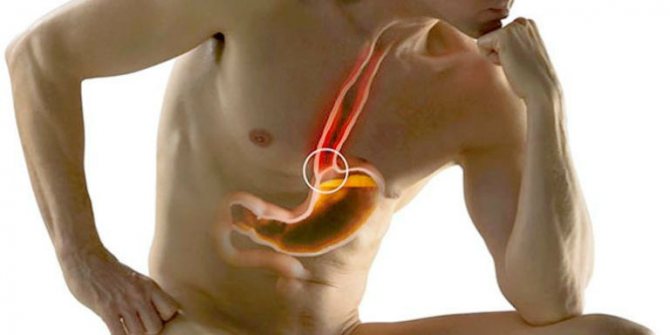
Before starting therapy, it is necessary to determine the level of acidity of gastric juice, since pain in the stomach can also appear with reduced secretion of hydrochloric acid
At the initial stage of development of the pathology, symptoms of hyperacid gastritis may be absent, but as the mucous membrane is damaged, the pain syndrome increases. Against the background of hyperacid gastritis, iron deficiency and folate deficiency anemia develops, which are characterized by headache, rapid heartbeat, dizziness, and neurological disorders.
Hyperacid gastritis is indicated by nausea, vomiting, rotten or sour belching, and diarrhea. To exclude pancreatitis and cholecystitis, laboratory tests are performed (general urine and blood analysis, ultrasound). In the absence of adequate and timely treatment, gastritis can progress to a peptic ulcer, which is characterized by ulcerations.
When an ulcer forms, perforation is possible and then the contents of the stomach penetrate into the abdominal cavity, which can lead to a fatal complication - peritonitis. The symptoms of gastritis and peptic ulcer disease are quite similar, the only difference is the intensity of the pain syndrome, therefore, in order to avoid the serious consequences of gastritis, it is necessary to pay attention to even mild pain in the stomach.
Diagnostics
If hyperacid gastritis is suspected, the doctor often resorts to the most informative type of examination today - FGS.
This abbreviation stands for fibroesophagogastroscopy. This diagnostic method allows not only to visually examine the entire inside of the stomach, but also to take tissue for subsequent examination. The analysis includes determining the presence or absence of the bacterium Helicobacter pylori infection, as well as, using pH-metry, clarifying the level of stomach acidity. In addition to FGS, in order to most accurately find out the cause of the disease, as well as its consequences, the patient will be recommended to undergo a number of examinations, which include an ultrasound examination of the abdominal organs, a blood test to determine blood sugar levels, as well as its biochemical parameters.
Depending on the causes and extent of the disease, the patient will be prescribed treatment, including taking certain medications, as well as correcting nutrition using a certain diet and, if possible, giving up bad habits.
Treatment
If after examination it is discovered that the cause of the disease is Helicobacter pylori infection, the patient will have to undergo a course of antibiotic therapy. Which antibiotics should be taken, and in what dosage, is decided only by the doctor, depending on the sensitivity of bacteria to certain antibiotics, the presence of other diseases in the patient, drug tolerance, age, weight and other indicators.
Today, there are drugs that can reduce excess stomach acidity. The class of these drugs is called “histamine receptor blockers”, as well as “proton pump inhibitors”. In addition, in pharmacies you can find many medications that can create a certain barrier on the wall of the stomach - a kind of film that can protect the stomach from the irritating effect of certain foods. These kinds of drugs are called antacids.
Causes of the disease
The most common factor that leads to the development of a hyperacid form of gastritis is the penetration of Helicobacter pylori into the body. This pathogenic bacterium, entering the human stomach through everyday life, does not die under the influence of hydrochloric acid, destroys the mucous membranes, and causes disruption of its functions.
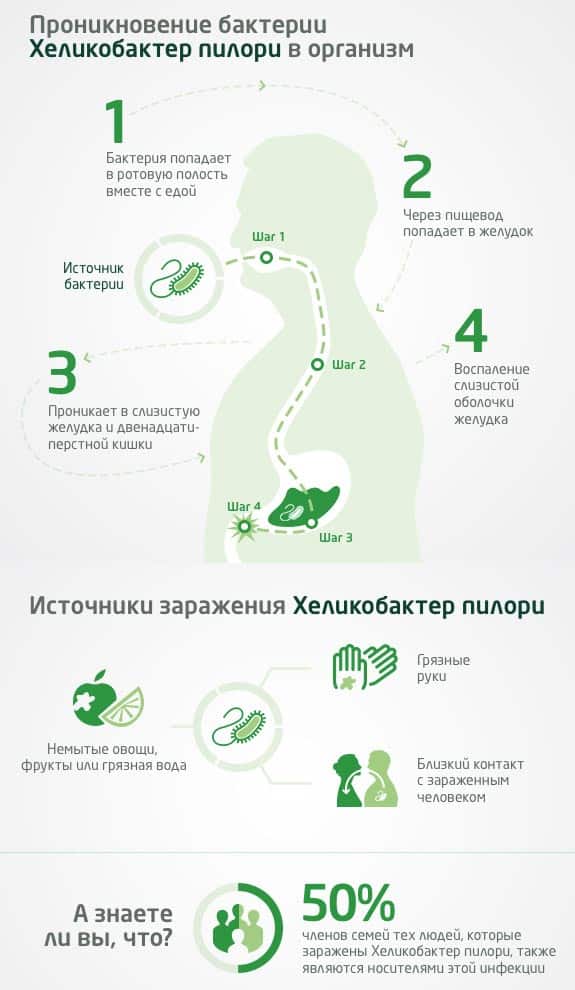
By multiplying, the bacterium provokes the occurrence of an inflammatory process in the mucous membrane, which contributes to the formation of erosions, gastritis, and stomach ulcers. The greater the number of bacteria, the more severe the disease.
In addition, the main reasons leading to increased formation of hydrochloric acid in the stomach are:
- organization of meals in violation of the eating regime;
- excessive consumption of foods that disrupt the normal functioning of the digestive system;
- food that is too cold or hot;
- frequent psychological and nervous stress;
- alcohol abuse;
- smoking;
- taking certain medications, in particular antibacterial drugs;
- diabetes mellitus, other endocrinological diseases;
- food allergies;
- pathology of the pancreas;
- liver dysfunction;
- infectious inflammation of the nasopharynx;
- heredity.
In a healthy person, the gastric mucosa is resistant to its irritating internal environment. Under the influence of harmful factors, this protection weakens, creating conditions for the development of inflammation. This condition is caused by harmful working conditions associated with professional activities, constant overwork, weakening of the body, and decreased immunity after serious illnesses.
Taking antibiotics
Often, the need to treat hyperacid gastritis occurs in people whose gastrointestinal tract develops a specific bacterium known as H. Pylori. The proliferation of the latter leads to increased acidity. However, the microorganism is not found in everyone who suffers from the disease.
Treatment of hyperacid gastritis with drugs when H. Pylori is detected involves taking antibiotics such as:
- "Metronidazole";
- "Amoxicillin";
- "Tetracycline";
- "Clarithromycin."
These drugs are quickly absorbed into the mucous membranes of the stomach, slowing down the activity of H. Pylori bacteria cells. However, taking such drugs with high acidity is often accompanied by rather unpleasant side effects, among which it is worth noting nausea, diarrhea, dizziness, and disruption of sleep and wakefulness.
Diagnosis and diagnosis
If an inflammatory process of the gastric mucosa is suspected, laboratory tests are carried out, which include:
- blood biochemistry analysis to determine antibodies to the bacterium Helicobacter;

- stool test to detect occult blood to rule out bleeding;
- test for the presence of Helicobacter pylori;
- analysis of gastric juice enzymes to determine the level of their production.
Other diagnostic methods are also used: pH-metry to determine the level of acidity, ultrasound examination to detect erosions on the walls of the stomach, in some cases radiography, computed tomography.
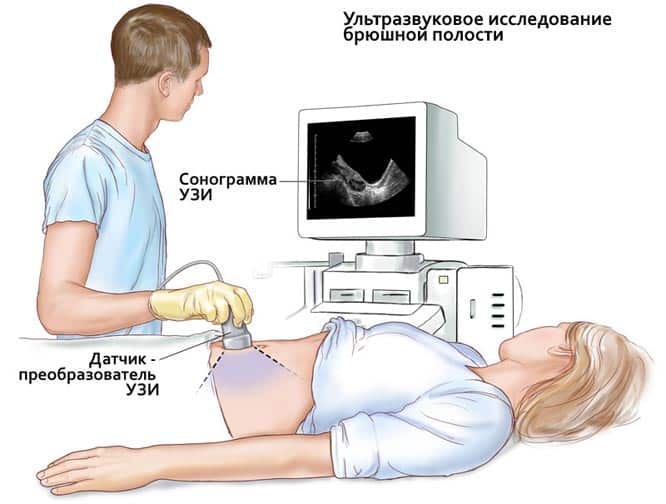
Treatment with drugs that reduce acidity
Treatment of hyperacid gastritis involves, first of all, the use of medications that reduce the production of gastric juices and also protect the mucous membranes from aggressive chemical influences. Such drugs include “Gasterin”, “Almagel”, “Phosphalugel”.
After taking the above remedies, there is a decrease in the severity of the main symptoms of hyperacid gastritis. At the same time, pain relief occurs. The active substances contained in such drugs form a thin film on the walls of the stomach, which does not allow irritants to affect ulcerative formations.
Method of treating the disease
The therapeutic technique consists of the use of medications, the use of folk remedies and the prescription of dietary nutrition.
Use of medications
Medicines are prescribed by a gastroenterologist after a detailed examination and confirmation of the diagnosis, based on the reasons for its occurrence.
Carefully! Self-administration of medications without a doctor’s prescription can aggravate the course of the disease and lead to serious complications.
Medicines used to treat gastritis, by their action, help to normalize the acid balance inside the organ, suppress the production of hydrochloric acid and gastric juice, relieve inflammation of the stomach walls, reduce spasms and pain.
If the patient has Helicobacter pylori, antibiotics are prescribed: Amoxicillin, Metronidazole, Augmentin and others. After such therapy, doctors recommend taking medications that restore intestinal microflora.
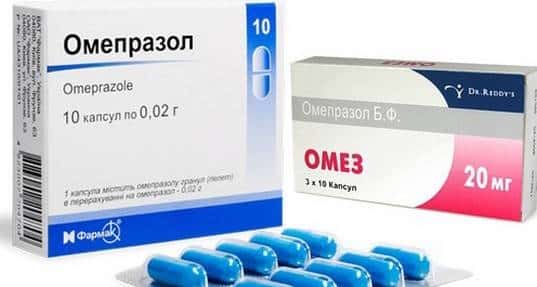
Treatment of hyperacid gastritis is based on the use of the following drugs:
To relieve spasms or pain, use No-Shpu, Phosphalugel, Gastal, Gaviscon, Maalox.
Traditional methods of treatment
For the prevention and treatment of gastritis with high acidity, traditional medicine methods are used, which can be used independently at home.
Baking soda helps to quickly get rid of heartburn with increased stomach acidity, but its effect is short-lived. Dilute a teaspoon of soda in a glass of water and drink a few sips. After taking this solution, the patient will belch and the burning sensation will stop.
Fresh potato juice is an effective folk remedy for treating stomach pain. Take it for a month, then take a break and repeat the course again. It is advisable to use before the spring and autumn periods of exacerbation. Grate the potatoes, squeeze out the juice, drink 100 ml per day, divided into 2 times - in the morning on an empty stomach, in the evening before bed.
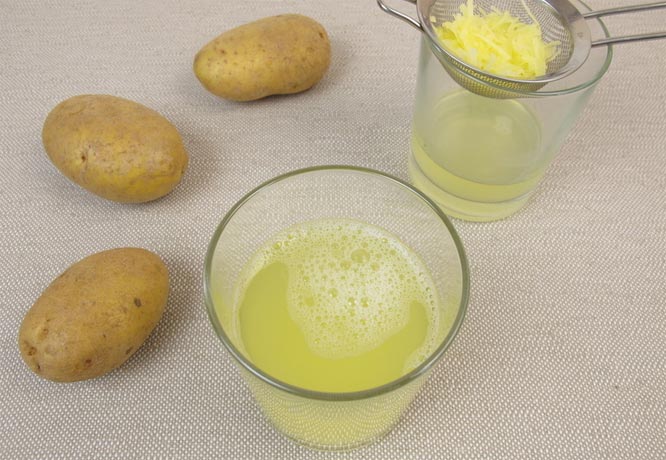
Acidity problems can be restored using sprouted wheat. Before breakfast, for one month, eat a dish of ground grains with the addition of vegetable oil, preferably flaxseed or olive oil. One serving will require 50 grams of wheat and a tablespoon of oil.
Nutrition rules
Patients suffering from gastritis with high acidity must follow a diet throughout their lives.

The diet for hyperacid gastritis is based on the following rules:
- eat dishes made from boiled, baked or steamed products;
- maintain a temperature that is comfortable for the digestive tract;
- limit salt intake;
- exclude fatty meats and fish, fried, spicy foods;
- reduce raw vegetables in the menu.
The diet for gastritis should be gentle; you should not overeat or allow yourself to feel hungry. The daily menu should be divided into several meals, eaten in small portions, the break between meals should not exceed 3 hours.
You should not eat acidic foods that stimulate the production of enzymes: certain types of apples, preserves with vinegar, sauerkraut. It is important to stop drinking alcohol and carbonated drinks.
Main signs of stomach disease
Gastroenterologists group the symptoms of stomach diseases into pathogenetic syndromes that depend on the secretory activity of the organ. They include pain and gastric dyspepsia, signs of bleeding. We will simultaneously consider diagnostic problems in diseases of the stomach with symptoms of hypo- and hyperacid conditions.
Hyperacid syndrome
Increased production of hydrochloric acid and hyperactivity of pepsin usually increase gastric motility. The main role belongs to the vagus nerve, which stimulates the receptors of parietal cells on the mucous membrane, causing an increased release of histamine and gastrin.
It is most often found in peptic ulcers in the pyloric part of the stomach and in the duodenum, chronic gastritis.
There must be intense pain in the abdomen, which, according to the mechanism of occurrence, is spastic. Maintained by spasm of the pyloric sphincter. They are localized in the epigastrium, hypochondrium on the right, radiate to the back, and have a paroxysmal character.

A burning sensation accompanies pain in a hyperacid state
Hungry and night attacks are typical due to the ongoing synthesis of hydrochloric acid without food intake. Late (1.5–2 hours after eating) is explained by the need for a time period for digestion in the small intestine and absorption of hydrolysis products, which then stimulate gastric secretion.
The pain is well relieved:
- antispasmodic drugs;
- warm heating pad;
- measures to reduce acidity (food, antacids).
Symptoms of gastric dyspepsia include:
- belching with sour contents;
- heartburn;
- nausea;
- spastic constipation with “sheep” feces;
- vomiting, which relieves pain.
Patients can self-induce vomiting if acidic contents have accumulated in the stomach. This method relieves pyloric spasm. Appetite is not affected.
Hypoacid syndrome
The pathology is caused by reduced gastric secretion and motility. Observed during atrophic processes of the mucous membrane. Most common lesion:
- with peptic ulcer localized in the body and fundus of the stomach;
- chronic atrophic gastritis.
Atrophic changes affect not only the cells, but also the receptor apparatus that responds to pressure in the stomach, so even normal stretching of the wall with a small amount of food causes pain.
Patients experience pain immediately after eating or after 30–40 minutes. They are not intense, have a dull character in the form of a feeling of heaviness, without clear localization, and do not radiate. After 2-3 hours, they subside on their own when the food leaves the stomach. In the treatment of stomach with hypoacid syndrome, prokinetics (Motilium) are effective in relieving pain.
The symptoms of gastric dyspepsia are the same as in a hyperacid state, but the belching is usually without acid; heartburn occurs due to reflux from the stomach into the esophagus. Characterized by decreased appetite and weight loss. Intestinal dyspepsia (bloating, diarrhea, rumbling) is more pronounced, which is caused by a sharp disturbance in the digestion of food.
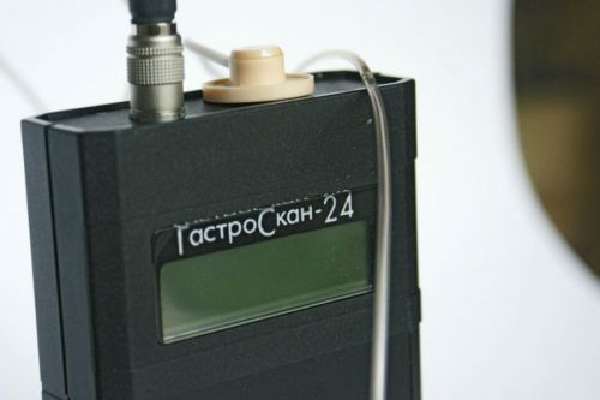
A modern device for daily monitoring that determines acidity at three points at once
Bleeding syndrome
Gastric bleeding is observed with peptic ulcers and tumors. It is detected by hidden blood in the stool or by severe symptoms with vomiting “coffee grounds”, black loose stools (melena). When bleeding from the esophagus, the vomit contains red blood (there is no contact with acid), and there is no previous nausea.
Blood in the stool must be differentiated from anal fissures, hemorrhoids, and rectal prolapse. Eating blueberries, blackberries, bird cherry, and bismuth preparations is important. The source of bleeding can be clarified using recto-, colonoscopy, or esophagogastroscopy.
A blood test determines hematocrit, red blood cell count, hemoglobin, and reticulocytes.
How to treat the stomach if there are signs of bleeding must be decided jointly by gastroenterologists and surgeons. Lack of intervention can lead to anemia and makes it even more difficult to fully restore the stomach.
Preventive measures
After treatment, in order to reduce the likelihood of exacerbation of the hyperacid form of gastritis, the patient must follow the following rules:
- do not violate the principles of diet in nutrition;
- exclude fatty, too spicy foods from the diet;
- give up alcohol and smoking;
- monitor your emotional state, avoid nervous stress;
- devote sufficient time to rest and sleep.
A person who discovers symptoms of high acidity needs to urgently contact a medical institution for examination, diagnosis and treatment. Timely initiation of therapy will help shorten the duration of the disease and avoid complications.
The information on our website is provided by qualified doctors and is for informational purposes only. Don't self-medicate! Be sure to consult a specialist!
Author: Rumyantsev V. G. Experience 34 years.
Gastroenterologist, professor, doctor of medical sciences. Prescribes diagnostics and carries out treatment. Expert of the group for the study of inflammatory diseases. Author of more than 300 scientific papers.


